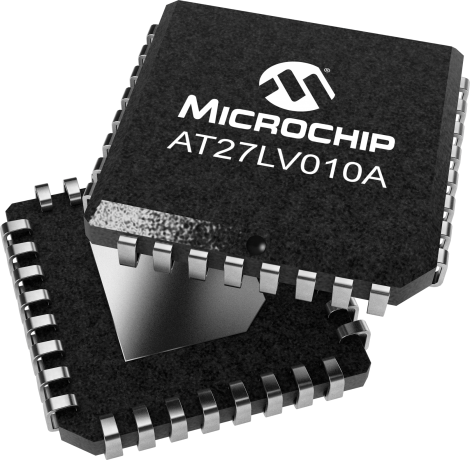-

Small Wonder: Advancements in the Miniaturisation of Capacitor Parts
As technology progresses, the demand for smaller and more powerful electronic devices has driven remarkable advancements in the miniaturisation of components like capacitors.. -

Find the right electronic part
Do you know exactly what electronic part you’re looking for? Great! Then you can easily find the best price on the market at Components CSE. Here is a guide on how to use Components CSE -

Harnessing the Power of Raspberry Pi 4: Real-World Applications and Setup Guide
Raspberry Pi 4, the latest iteration of the popular single-board computer, has revolutionized the world of embedded systems and DIY electronics. Learn more... -

POTENTIOMETER AND RHEOSTAT
When it comes to controlling electrical currents, two devices often come into consideration: rheostats and potentiometers. Learn more... -

T Flip-Flops and Its Working: A Comprehensive Guide
Flip-flops are fundamental building blocks in digital electronics, and among the various types, the T flip-flop stands out for its versatility and essential role in sequential circuit design.
EPROM Memory
Erasable Programmable Read-Only Memory (EPROM) is an iconic non-volatile memory technology that laid the foundation for modern EEPROM and Flash memory. EPROM allows data storage without a constant power source and features a unique erasable design. In this category overview, we'll explore what EPROM memory is, how it works, its advantages and disadvantages, the different types available, its applications, the erasing process, and the prominent manufacturers in this field.
What is EPROM Memory?
EPROM (Erasable Programmable Read-Only Memory) is a non-volatile memory technology that can store data even when the power supply is removed. Unlike RAM (Random Access Memory), EPROM's data can be programmed (written) and erased electrically using ultraviolet (UV) light, making it a critical component in early microcomputers and embedded systems.
How Does EPROM Memory Work?
EPROM memory works by using a grid of floating-gate transistors that can be electrically programmed and erased. These transistors, arranged in a matrix, store binary data (0s and 1s) in the form of electrical charges on their gates. The data is retained in the EPROM until it's explicitly erased, even when the power is off.
Advantages and Disadvantages of EPROM Memory:
Advantages:
- Non-Volatile: Data remains intact even without a continuous power supply.
- Reprogrammable: EPROM can be electrically programmed and erased multiple times.
- High Data Retention: Data stored in EPROM can be retained for extended periods.
- Reliability: EPROM has high durability and can withstand multiple write and erase cycles.
Disadvantages:
- UV Erasure: EPROM requires exposure to ultraviolet (UV) light for erasure, which can be cumbersome.
- Complex Erasing Process: UV erasure and reprogramming require specific equipment and handling.
- Limited Endurance: Like other non-volatile memory, EPROM has a finite number of write and erase cycles.
Types of EPROM Memory:
- UV EPROM: Traditional EPROMs that use ultraviolet light for erasure.
- One-Time Programmable (OTP) EPROM: These EPROMs can be programmed once and are not erasable.
- Windowed EPROM: These are UV EPROMs with a small quartz window for UV light exposure.
- Flash EPROM: A modern adaptation of EPROM that uses electrical erasure, like EEPROM.
Application Areas of EPROM Memory:
- Historical Computing: EPROM was commonly used in early microcomputers for storing BIOS and firmware.
- Embedded Systems: EPROM found applications in embedded systems for program storage.
- Microcontrollers: Some microcontrollers used EPROM for their program memory.
- Testing and Debugging: EPROMs were used in the development of electronic circuits and prototypes.
- Education and Hobbyist Projects: EPROMs were used in educational and hobbyist electronics projects.
How is EPROM Memory Erased?
EPROM memory is erased using ultraviolet (UV) light. The memory chip has a small quartz window that allows UV light to reach the floating-gate transistors. Exposure to UV light for a specified duration erases the data stored in the EPROM, making it ready for reprogramming.
Popular Brands that Manufacture EPROM Memory:
- Microchip Technology: Microchip offers a range of memory solutions, including some EPROM devices.
- STMicroelectronics: STMicroelectronics manufactures various memory solutions, including EPROMs.
- Cypress Semiconductor: Cypress Semiconductor provides memory products, and some of them may include EPROM technology.
Results:111
| Image | MPN | Manufacturer | Datasheet | ROHS | Price | Stock | Updated at |
|---|---|---|---|---|---|---|---|

|
Microchip Technology |
Datasheet |
Not Compliant | Loading.. | Loading.. | 1 second ago | |

|
Microchip Technology |
Datasheet |
Not Compliant | Loading.. | Loading.. | 1 second ago | |
|
|
Microchip Technology |
Datasheet |
Not Compliant | Loading.. | Loading.. | 1 second ago | |

|
Microchip Technology |
Datasheet |
Not Compliant | Loading.. | Loading.. | 1 second ago | |

|
Microchip Technology |
Datasheet |
Not Compliant | Loading.. | Loading.. | 1 second ago | |

|
Microchip Technology |
Datasheet |
Not Compliant | Loading.. | Loading.. | 1 second ago | |

|
Microchip Technology |
Datasheet |
Not Compliant | Loading.. | Loading.. | 1 second ago | |

|
Microchip Technology |
Datasheet |
Not Compliant | Loading.. | Loading.. | 1 second ago | |

|
Microchip Technology |
Datasheet |
Not Compliant | Loading.. | Loading.. | 1 second ago | |

|
Microchip Technology |
Datasheet |
Not Compliant | Loading.. | Loading.. | 1 second ago | |

|
Microchip Technology |
Datasheet |

|
Loading.. | Loading.. | 1 second ago | |

|
Microchip Technology |
Datasheet |
Not Compliant | Loading.. | Loading.. | 1 second ago | |

|
Microchip Technology |
Datasheet |
Not Compliant | Loading.. | Loading.. | 1 second ago | |

|
Microchip Technology |
Datasheet |
Not Compliant | Loading.. | Loading.. | 1 second ago | |

|
Microchip Technology |
Datasheet |
Not Compliant | Loading.. | Loading.. | 1 second ago |
Results:111

Manufacturer Part Number:
AT27C4096-90JU-T
Manufacturer:
Microchip Technology
DatasheetNot Compliant


Manufacturer Part Number:
AT27C512R-45JU-T
Manufacturer:
Microchip Technology
DatasheetNot Compliant

Manufacturer Part Number:
AT27C512R-70JU-T
Manufacturer:
Microchip Technology
DatasheetNot Compliant

Manufacturer Part Number:
AT27LV010A-70JU
Manufacturer:
Microchip Technology
DatasheetNot Compliant

Manufacturer Part Number:
AT27LV010A-70JU
Manufacturer:
Microchip Technology
DatasheetNot Compliant

Manufacturer Part Number:
AT27LV010A-70JU-T
Manufacturer:
Microchip Technology
DatasheetNot Compliant

Manufacturer Part Number:
AT27LV020A-12JU
Manufacturer:
Microchip Technology
DatasheetNot Compliant

Manufacturer Part Number:
AT27LV020A-12JU-T
Manufacturer:
Microchip Technology
DatasheetNot Compliant


Manufacturer Part Number:
AT27LV040A-90JU
Manufacturer:
Microchip Technology
DatasheetNot Compliant

Manufacturer Part Number:
AT27LV040A-90JU-T
Manufacturer:
Microchip Technology
DatasheetNot Compliant

Manufacturer Part Number:
AT27LV256A-90JU
Manufacturer:
Microchip Technology
DatasheetNot Compliant



